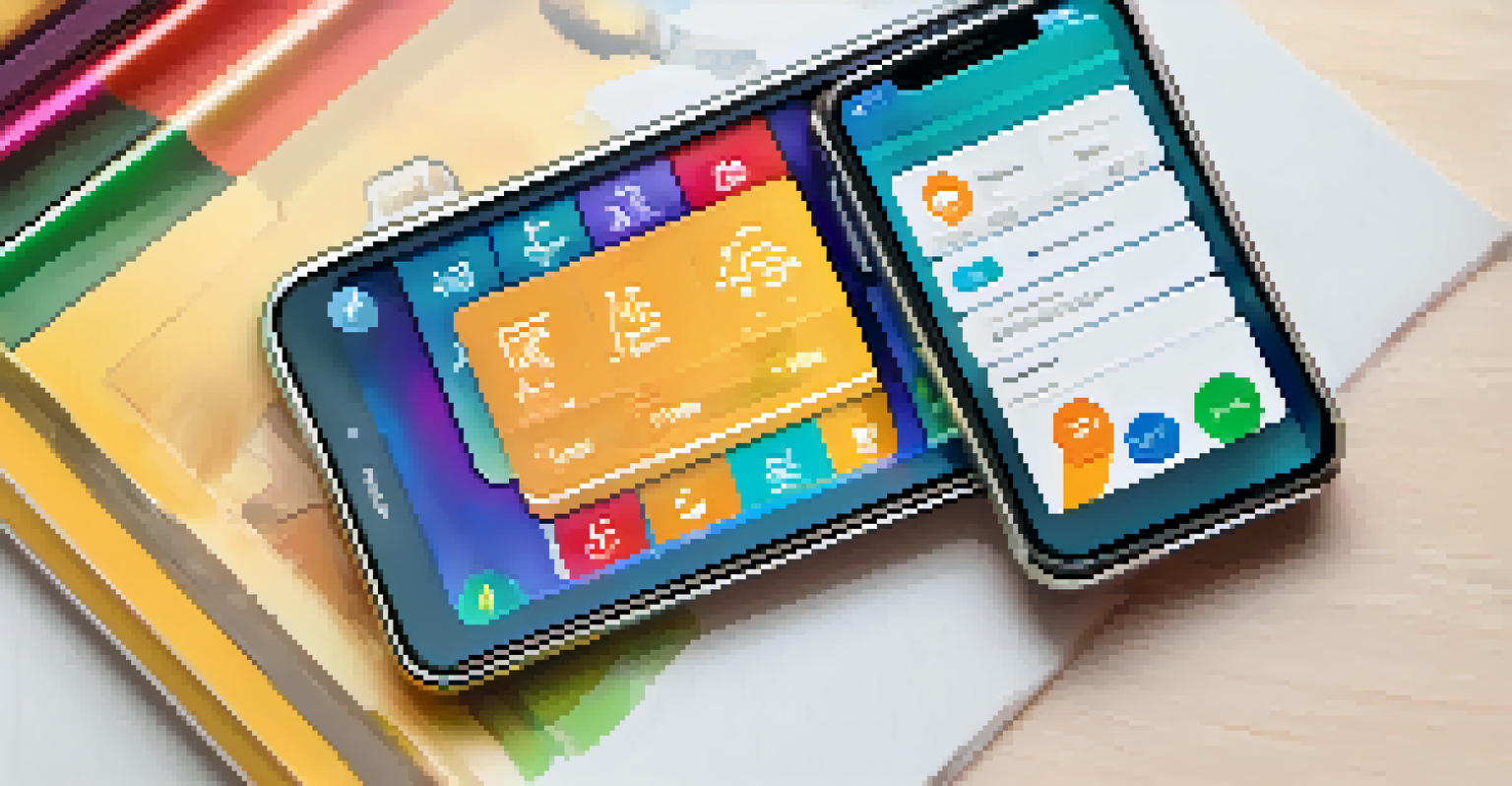The Importance of User Experience in EdTech Development

Understanding User Experience in Education Technology
User experience (UX) in EdTech refers to how students and educators interact with educational tools and platforms. It's about creating an environment that is intuitive, enjoyable, and efficient. When learners feel comfortable navigating a platform, they are more likely to engage deeply with the content, leading to better educational outcomes.
Design is not just what it looks like and feels like. Design is how it works.
Think about the last time you used an app that just made sense. You didn't have to think twice about where to click or how to find information. That’s the kind of seamless experience we should aim for in EdTech. It’s essential to focus on the user’s journey, from the first login to completing a course.
Ultimately, a well-designed user experience can make the difference between a tool that’s used regularly and one that sits untouched. When learners can easily find what they need, they can spend more time learning and less time troubleshooting.
The Role of Empathy in Designing EdTech Solutions
Empathy is at the heart of effective EdTech design. By understanding the needs, challenges, and motivations of the users—students, teachers, and administrators—developers can create tools that truly serve their audience. This means not just asking for feedback but actively involving users in the design process.

For instance, consider how a dyslexic student might navigate a learning platform differently than their peers. By empathizing with these diverse user experiences, developers can implement features like text-to-speech or customizable fonts to enhance accessibility. This personalized touch ensures that all learners have a fair chance to succeed.
Empathy Drives Effective EdTech Design
Understanding users' needs ensures that educational tools are genuinely supportive and accessible for all learners.
When users see that their specific needs are addressed, it builds trust and promotes a positive relationship with the technology. This sense of connection can increase user satisfaction and encourage ongoing engagement with the platform.
Accessibility: A Key Component of User Experience
Accessibility in EdTech is not just a legal obligation; it’s a critical aspect of user experience. It ensures that all learners, regardless of their abilities, can access educational resources and participate in learning. This includes considering various disabilities, such as visual, auditory, or cognitive impairments.
The best way to predict the future is to invent it.
Imagine a classroom where a visually impaired student can fully engage with digital content. By incorporating features like screen readers, alternative text for images, and keyboard navigation, you create an inclusive environment. This not only benefits those with disabilities but also enhances the overall experience for all users.
Focusing on accessibility can lead to innovative solutions that improve the platform for everyone. When technology is designed with inclusivity in mind, it fosters a richer, more diverse learning experience.
The Impact of Intuitive Design on Learning Outcomes
Intuitive design is about making technology easy to use, which directly impacts learning outcomes. When students don’t have to struggle with complex navigation or confusing interfaces, they can devote their mental energy to absorbing information. This clarity can lead to improved retention and understanding of the material.
Consider an online course that uses a cluttered layout. Students may feel overwhelmed, leading to frustration and disengagement. In contrast, a clean, organized interface guides learners through the content naturally, helping them focus on what truly matters—the learning itself.
Accessibility Enhances Learning Experience
Incorporating features for various disabilities not only benefits those individuals but improves the overall user experience for everyone.
Achieving this level of intuitiveness requires thorough testing and iteration. By observing real users as they interact with the platform, designers can identify pain points and make informed adjustments that enhance the overall learning experience.
Feedback Loops: Enhancing EdTech Through User Input
Establishing feedback loops is crucial for continuous improvement in EdTech development. By regularly soliciting user input—whether through surveys, focus groups, or usability tests—developers can gain valuable insights into what works and what doesn’t. This iterative process allows for ongoing refinements that align with user needs.
For example, if students report difficulty with a specific feature, it’s vital to address those concerns promptly. This not only improves the user experience but also shows learners that their voices matter. When users feel heard, they are more likely to engage positively with the platform.
Creating a culture of feedback fosters innovation. It encourages developers to think outside the box and experiment with new ideas, ultimately leading to a more effective educational tool.
The Importance of Mobile Responsiveness in EdTech
In our increasingly mobile world, ensuring that EdTech solutions are responsive on various devices is essential. Students often use smartphones and tablets for learning, so a platform that doesn't adapt well can hinder their access to educational resources. A mobile-friendly design enhances user experience by allowing learners to study anytime, anywhere.
Imagine a student trying to complete an assignment on a cramped desktop interface. They might struggle with navigation or miss critical information. In contrast, a responsive design adjusts to the device, providing a seamless experience whether they’re on a phone, tablet, or computer.
Iterative Feedback Fuels Improvement
Regularly collecting user feedback allows developers to refine EdTech solutions, making them more effective and user-friendly.
Prioritizing mobile responsiveness not only improves accessibility but also encourages mobile engagement. By creating a versatile platform, you’re meeting users where they are, making learning more convenient and effective.
Measuring User Experience: Key Metrics to Consider
To truly understand the effectiveness of user experience in EdTech, it’s essential to measure it. Key metrics can include user satisfaction ratings, completion rates, and time spent on tasks. These indicators provide valuable insights into how users interact with the platform and highlight areas for improvement.
For instance, if you notice a high dropout rate in a specific course, it may indicate a UX issue that needs addressing. Perhaps the content is too challenging, or the navigation is unclear. By analyzing these metrics, developers can make data-driven decisions that enhance the user experience.

Ultimately, measuring user experience allows for a more nuanced understanding of how learners engage with EdTech tools. It empowers developers to create solutions that not only meet educational needs but also foster a positive learning environment.